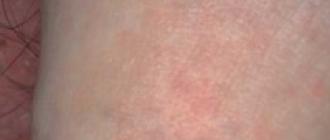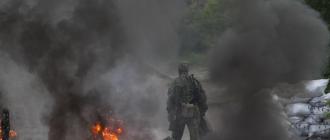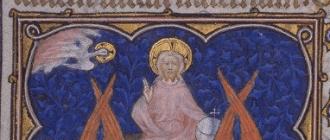Modernization of the milling metalworking machine will increase the technical potential and significantly expand its productive capabilities. One of options modernization is to install on milling machine coordinate mini-table. By using a coordinate table for the milling unit, the manufacturer can significantly reduce labor intensity.
Characteristic
The device of the coordinate table is an additional design to the machine, which allows you to move the part fixed on it along the required trajectory. The unit can be used for both milling and drilling units. There are two types of coordinate table - industrial factory or small home-made.
The table can be set in motion by mechanical action manually, by means of electric drives or by means of computer control systems. When using numerical control, production is as automated as possible, and the accuracy of part processing varies in the region of several micrometers.
Variety
In the factory version, the coordinate part installed on a milling or drilling machine includes:
- bearing support;
- control drives;
- part fixing system;
- automated control system.
Fixing parts is divided into three types:
- vacuum;
- using the mass of the part itself;
- mechanical.

Coordinate structures have several different execution schemes, but there are two main ones:
- portal;
- cross.
The cross scheme is used for processing volumetric parts, which is solved by using additional structures with three degrees of freedom. This means that the workpiece being machined has the ability to move in X, Y, and Z coordinates. In this design, the coordinate structure is installed on a milling machine.
The portal scheme is a rotary table that is used to work with flat parts, in particular for drilling, with a rigidly fixed working body when movement along the vertical axis is necessary.
At enterprises for the manufacture of large-sized products, long coordinate aluminum structures are installed. This increases the functionality of the machines used, because it is possible to fix equipment on the workbench, such as:
- special connector for tools;
- cooling drive;
- lubrication drive;
- neutralization of harmful gases and vapors;
- dust and chip removal drive.
Features of the supporting structure
The execution of the coordinate settings for the milling machine and the machine differs in the material from which the supporting structure is made. If these are metal massive parts, then it is necessary to use a more rigid structure, which may consist of cast metal.
More rigid structures are still used to ensure the necessary clarity of movement of the work item on machines with, since the speed of movement of the workpiece in such a production can reach several meters per second.
The material that is used to make the coordinate mounting pads is chosen as follows:
- steel;
- cast iron;
- aluminum alloys.
Structures made of aluminum alloys are designed for light loads and are often used to equip drilling machines, where only vertical movement of the workpiece is implied.
The advantages of such a device are:
- manufacturability;
- budgeting;
- low weight of the structure.
Movement Transmission Mechanisms
Factory and homemade coordinate mini-platforms are set in motion mechanically. If the production is associated with high-precision processes, then in such cases electric motors are used.
Gear types to convert rotary motion into translational, and also to move the part relative to the work item, are divided according to the method of implementation.
They are divided into:
- gear;
- belt;
- screw.

Parameters that affect the selection of the transmission type:
- the speed of movement of the site with the workpiece fixed on its surface;
- electric motor power;
- processing accuracy.
The best option in terms of efficiency and ensuring the accuracy of moving the part has a ball screw, which also has a number of other features:
- lack of jerks when moving;
- no noise;
- small backlash.
One of the disadvantages of such a transfer implementation is the inability to move the coordinate table at high speed. The second disadvantage is the high cost.

The high cost is one of the disadvantages of this transfer
Additional options
It will be cheaper to use a belt drive, but in proportion to the decrease in cost, the disadvantages also increase:
- increased wear;
- the need for frequent maintenance;
- high probability of belt breakage;
- low accuracy.
High accuracy and fast movement of the part on a fixed platform can be ensured when using gear train, but in such a mechanism you need to be prepared for the appearance of backlash some time after the start of operation.
One of the best options transmission of motion from the engine to the coordinate mini-installation is the use of a direct drive, which consists of:
- linear motor;
- servo amplifier.

Servo amplifier
The advantage of these drives is that there is no need to use mechanical transmissions. This design allows you to directly transfer the movement from the engine to the elements of the coordinate table.
Another advantage is the increased speed and accuracy of part processing. Due to the fact that there are no auxiliary gears in the table scheme, the number of series-connected elements is reduced, and this, in turn, better side affects the reliability of the coordinate setting.
conclusions
Noticeably, in relation to other types of gears, the error is also reduced, which is at the level of units of micrometers. Direct drive is characterized by high rates of braking and acceleration.
Due to the fact that in a direct drive there are no parts that are subject to friction, the coordinate aluminum installation less subject to wear, which has a positive effect on its durability.
One of the few, but at the same time the most significant drawbacks of direct drive is its price. The high cost of mass high-precision production is justified and paid off.
The efficiency and accuracy of machining a part largely depends on the quality of the machine. Properly selected mechanism serves as a guarantee of product compliance with all specified standards and tolerances. An important role in observing the drilling technology is played by the coordinate table.
Concept and types
The table is a manipulator for fixing the workpiece to be processed. Outwardly, it looks like a plate with the possibility of fixing the part using:
- mechanical method;
- vacuum method;
- own weight of the workpiece.
Products come with one, two and three degrees of freedom. This means that the feed is carried out along the X, Y, Z coordinates. For drilling flat parts, horizontal movements are sufficient. With a bulky product or a fixed drill, a vertical movement of the table is necessary.
For large industrial drilling installations, long coordinate platforms are made. They are equipped with their own installation frame. On such a device, both the part and the processing unit itself are mounted. The table for small machines is made with fastening to the device or on a workbench surface.
By setting the table in motion, the design can be:
- mechanical;
- electric;
The latter type is the most accurate, but the cost of such a device is significant.
Manufacturing of load-bearing elements
The materials for the manufacture of the skeleton of the table are:
- cast iron;
- metal;
- aluminum.
The latter material is used for circuits with light loads and low torsional forces. This option is acceptable when drilling wood or plastic.
Extruded aluminum frame profile, mounted on threaded connections. Thus, a solid foundation is obtained. Advantages of the material in:
- low weight;
- availability;
- ease of installation.
Many companies produce ready-made kits for assembling tables with their own hands.

Cast base structures are often cast iron. Their weight is significant, but the efforts that they are able to withstand are quite high. Such tables are used for large volumes of production. Installation is carried out on the foundation, permanently.
The welded frame is the best option for both production facilities and home use. The main thing is to reduce the weld stresses of the metal by releasing when welding with your own hands. Otherwise, when the engine is gaining speed, cracks may appear in the frame.
Drilling machines use two technological schemes table:
- cross;
- portal.
The first is used for bulk workpieces. It makes it possible to carry out other manipulations on the fixed workpiece. Access to the part with this scheme is provided from three sides.
The portal scheme is used when drilling flat products. It is easier to manufacture and is characterized by increased processing accuracy.
Selection of guides
From right choice and fastening of the movement guides of the table surface depends on the accuracy of processing. Rail and cylindrical elements are used. They are produced with carriage superstructure and mounted bearing units.
The choice of the type of table guides depends on the type of drive. The part under consideration works to overcome the friction force. If you need high precision in movement, it is better to choose plain bearings. Rolling bearings reduce friction but create a lot of backlash.
By type of carriage guides are:
- with an enlarged flange, for fastening to the bottom of the table;
- flangeless for conventional mounting to top threaded holes.
When making your own hands, you can order rails with a stainless coating. They have a longer service life and longer abrasion resistance.
Types of gears for table movement
With a small desktop machine, the movement of the table is carried out mechanically. But the greater the speed, accuracy and performance required, the more carefully the type of drive is chosen. Mostly electric motors are used.
The essence of the operation of the unit is to convert the rotational operation of the engine into the translational movement of the table plane. There are three types of transfers:
- rack and pinion;
- belt;
- ball screw.
The choice of node type is made based on:
- workpiece movement speed;
- machine engine power;
- required processing accuracy.
Machining accuracy with various transmission units
Ball screw advantages:
- the possibility of high-precision processing;
- small backlash;
- smooth movement of the table;
- noiselessness of work;
- ability to take on heavy loads.

A significant disadvantage is the limited feed rate. The decrease in speed is especially pronounced with a propeller length of more than 1500 mm. Approximate calculation of speed: for a drive with a power of 1 kW, the rotation speed is 3000 rpm. With a screw pitch of 10 mm, the transmission speed is 0.5 m/s. In this case, 3 m will be covered in 6 seconds.
Another disadvantage is the high cost. You can reduce the cost of the project by using a connection with a screw and nut. In this case, it is necessary to ensure constant lubrication of the assembly.
In drilling machines of a new generation, lubrication of the movable mechanisms of the coordinate surface is carried out automatically. Sensors for monitoring the temperature of important parts are mounted in the device.
With rack and pinion transmission, high speed and sufficient accuracy are ensured. The disadvantage is high degree backlash when transferring forces from the drive.
Installing a belt is the most budgetary and common way to create a table with your own hands. The low cost of a belt drive and feed speed up to 1 m/s is offset by the following disadvantages:
- rapid wear;
- loss of tension due to stretching;
- the possibility of breaking during acceleration;
- low precision work.
When buying a coordinate table for drilling or do-it-yourself installation, you must take into account the working conditions. The ratio of all mechanisms by parameters: workload, service life, heating and cooling, will give good result at work. This is especially important when self-manufacturing from improvised materials.
Device from Victor Travelller - coordinate table for drilling machine. As I understood from the description, it can perform two functions. Firstly, with it it is no longer necessary to rearrange the vise by unscrewing and tightening the nuts, which is somewhat annoying)))). And secondly, by replacing the drill with a carbide cutter and gradually feeding the workpiece under the tool, it is possible to mill grooves in the metal various shapes. But more about that later, first about the device.
Table parameters:
- Length 350 mm
- width 350 mm
- thickness - 65 mm.
- The total length of the guides is 300mm.
- Accuracy about 0.1mm
- The stroke of each carriage is 94mm. (With these geometric parameters it was possible and 105mm, but too lazy to saw off washers)
- Load capacity up to 15 kg (although this parameter is more limited by the drill table itself)
For the manufacture of the stoic, structural wear-resistant tool profiles of the St1-St-3 grades (could be worse) were required. A 20x20 profile 2 mm thick was used. similar fasteners, and bearings.
"Explosion-scheme":
The central knot of all table is a crosspiece. All the rest of the details can be done almost like a blunder, but you have to try with it, because if it warps, then the whole table will be covered. It is advisable to use welding (for example, spot welding).

On using the already welded cross as a template, we assemble the carriages, which are U-shaped parts. 
In the profile, after a slight refinement with a file, M10 nuts are inserted. 
We assemble handles with a bearing assembly on M10 studs. 
We weld U-shaped bases from the corner. We assemble the entire scheme on bolts screwed into previously pressed nuts.
The studs are tensioned between the bearings with nuts, which allows you to remove the gaps in the bearings, and at the same time the gaps in the screw-nut pairs. At the same time, when the entire circuit is pulled to the center, vertical backlashes are removed. 
The sequence of fastening units with bearings is schematically presented as follows. 
The assembled table looks like this. All components and moving parts should be well lubricated. 
We attach the assembled table to the bed of the drilling machine,  and on it (through a plywood gasket - you can do without it) a vise. Plywood, by the way, will protect the lubricated elements from chips getting into them.
and on it (through a plywood gasket - you can do without it) a vise. Plywood, by the way, will protect the lubricated elements from chips getting into them. 
Now let's talk about the capabilities of this device. Firstly, when drilling parts, you do not need to twist the vise from place to place, just turn the knobs.
Secondly, by turning the handles under load, you can mill metal parts, including along a fairly complex trajectory. 
Here is another example of milling. Up to a millimeter of material can be removed in one pass.

Thirdly, such a modernized machine can be used for turning. The cutter is fixed in a vice, and the workpiece rotates in the chuck. 
In general, having spent relatively little time and money, we can end up with an excellent, multifunctional device that significantly expands the capabilities of the drilling machine.






